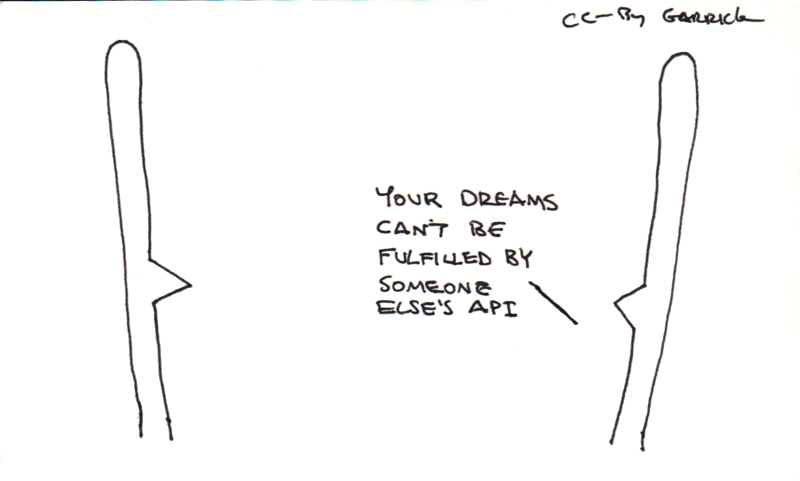After working with a variety of tools purporting to help define and develop new products, I can tell you I’m frustrated. I’m frustrated by how difficult they are; Even something as basic as the underlying need, whether articulated as a ‘customer pain’ or a ‘painkiller’ or a ‘need’ (vs. a ‘nice to have’) the final …
Category Archives: Featured Articles
Is This a Good Idea?
7 Questions to Determine if You’re onto Something BigAfter decades of working with entrepreneurs, product executives, and creating a few of my own products (a few modestly successful and many absolute duds), I’ve developed a short checklist for whether an idea is worth the significant time and effort to develop into a product. Far too …
You’re Not Going to Need It
Neal Conan: “You had solar panels (on your sailboat) for electricity.” Matt Rutherford: “I did, but they broke.” Neal: “They broke?” Matt: “One by one.” Neal: “I think you had a Kindle for reading books.” Matt: “I did. It broke in a storm.” I like Matt’s story for all that it tells as about our …
Red Flags? What Red Flags?
This was going to be a crappy project. The red flags were there from the very beginning. The first: when my my buyer said, as I was about to sign the contract, “Today is my last day.” I should have set the pen down right there, replied with a ‘Thank you for letting me know’ …
Correction Canary
About fifteen years ago now, I was reorganizing how search results are displayed in a popular travel site (one you’ve probably used). The goal of the project was to to increase readability and scannability. To do this, I needed to move a few bits of information around. In my rush to prepare the prototype for …
Measuring Growth in Your ‘Return on Lifestyle’ Business
In almost all cases, growing a business means one of the following: – ever-increasing revenues – ever-increasing share price – ever-increasing customer count – ever-increasing headcount These are the metrics reported in the business section. These are the numbers that get everyone – the leadership team, the shareholders, early investors, the office space owners, the …
Continue reading “Measuring Growth in Your ‘Return on Lifestyle’ Business”
All There Is
Back in 2008, I received a half pound of George Howell’s Terroir Coffee: El Salvador: Finca La Montaña. This particular coffee won the Cup of Excellence the prior year and then – the plantation was completely wiped out by near hurricane strength winds. Gone. The half pound in my possession, in the middle of winter …
Make Mountains into Milestones
I recently returned from four refreshingly long days in Lutsen along the beaches of Lake Superior’s north shore. The weather was warm and calm enough to spend one of the mornings in a kayak. After scooting along the shoreline, our tour guide led us out in to the lake, far enough out that the shore …
Have a Better Day
I don’t need to tell you this winter was cold. You were there. Simultaneously grateful and baffled that you’re living through month-long stretch of highs below 0°F. Highs below 0°F. My car, parked in the open air stopped turning over. Each morning, it would cry as I turned the key. Wahhh Wahhh Wahhh Wahhh. On …
Where’s Your Buyer Platform?
A few weeks ago, I met with a local small business owner. We first met back when we were both solo and have met for coffee every 6 months or so since. He now maintains an office downtown full of employees. Towards the end of our time together, he asked which social media services I …
